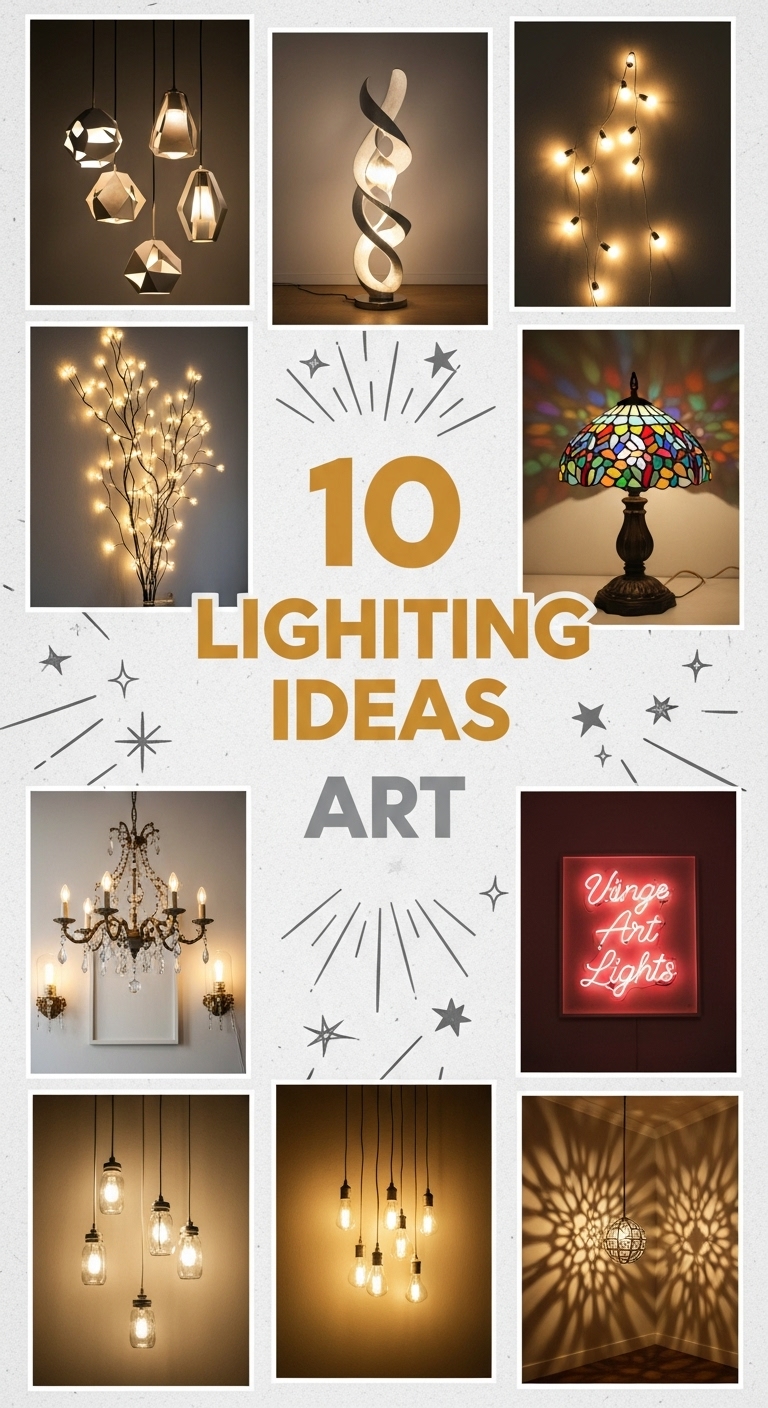
10 Lighting Ideas Art
Art plays a powerful role in defining the atmosphere of a space. Whether it is a painting, sculpture, photograph, or installation, proper lighting is essential to highlight the artwork and bring out its beauty. Lighting does not simply make a piece visible, it influences the way colors appear, the way textures are perceived, and the overall impact of the piece on the viewer. Choosing the right lighting for art requires balancing aesthetics, functionality, and preservation.
This article explores ten lighting ideas for art that can transform the way your collection is experienced. Each idea highlights specific techniques and approaches, offering inspiration for home galleries, museums, and personal spaces where art deserves to shine.
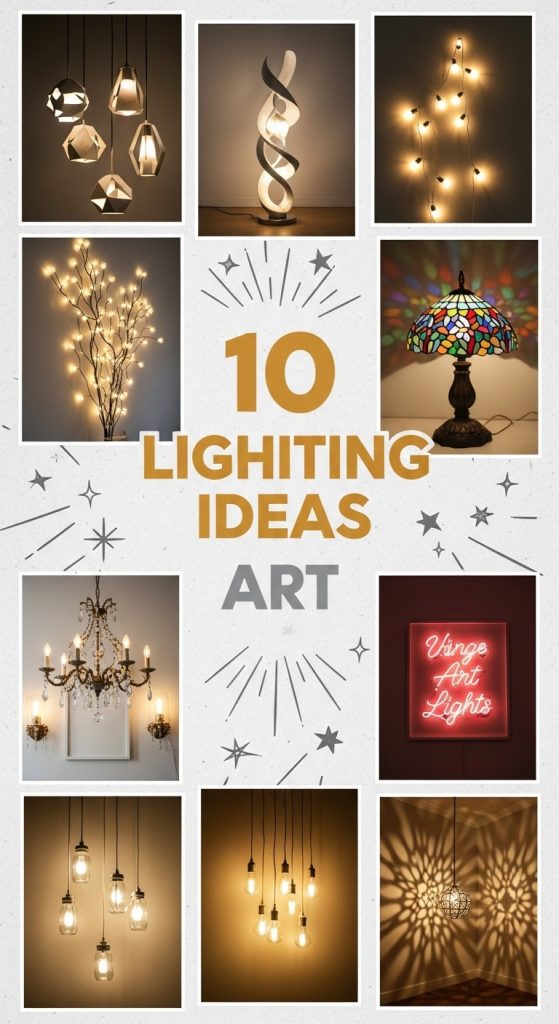
1. Track Lighting for Flexibility
Track lighting is one of the most popular choices for art displays due to its flexibility. Adjustable track heads allow you to reposition lights easily, directing beams onto specific pieces or areas. This is particularly useful if you have a rotating collection or plan to update your art displays frequently.
Track lights can be fitted with LED bulbs that provide consistent brightness without generating excess heat. They also work well for both small and large art collections, making them a versatile option. By controlling the angle and intensity of each head, you can highlight paintings, sculptures, or mixed media works in a professional and adaptable manner.
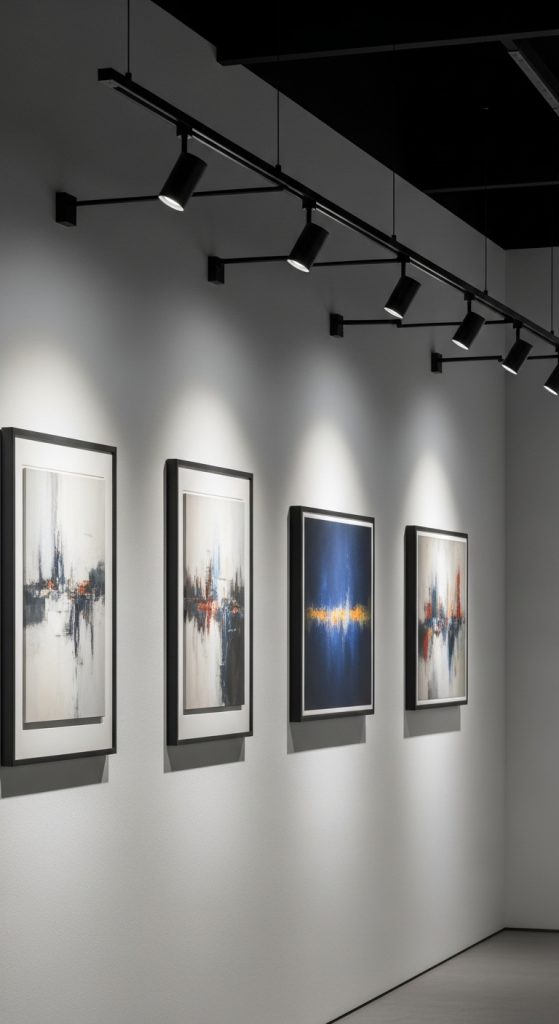
2. Picture Lights for Classic Illumination
Picture lights are mounted directly above or on the frame of a painting, offering targeted illumination. This traditional lighting method has been used in galleries and stately homes for centuries. It creates an intimate and focused look, drawing attention directly to the artwork.
Modern picture lights are available in LED versions that prevent damage caused by heat or ultraviolet rays. They come in various finishes, such as brass, bronze, or matte black, to match the frame or interior design. A well-placed picture light not only illuminates the artwork but also adds elegance to the room.
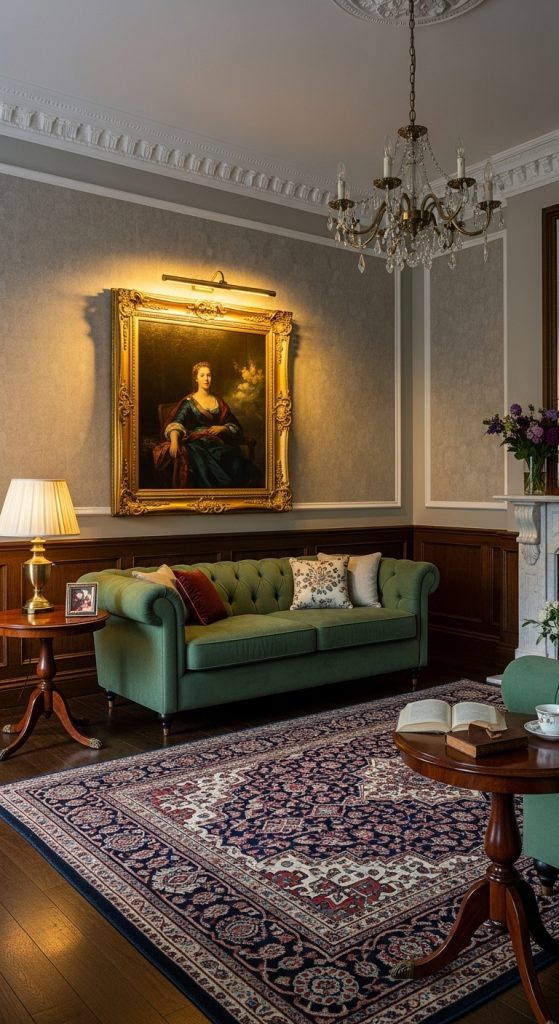
3. Recessed Lighting for Minimalism
Recessed lighting provides a clean and minimalist way to highlight art without drawing attention to the light source itself. Installed in the ceiling, recessed fixtures can be angled to direct beams onto specific pieces. This approach ensures that the focus remains on the art rather than the fixture.
Recessed lighting works well in contemporary spaces where minimalism and subtlety are valued. By using dimmable LEDs, you can control the brightness and create the perfect ambiance for each piece. It is particularly effective for wall-mounted paintings and photography, offering a sleek and modern presentation.
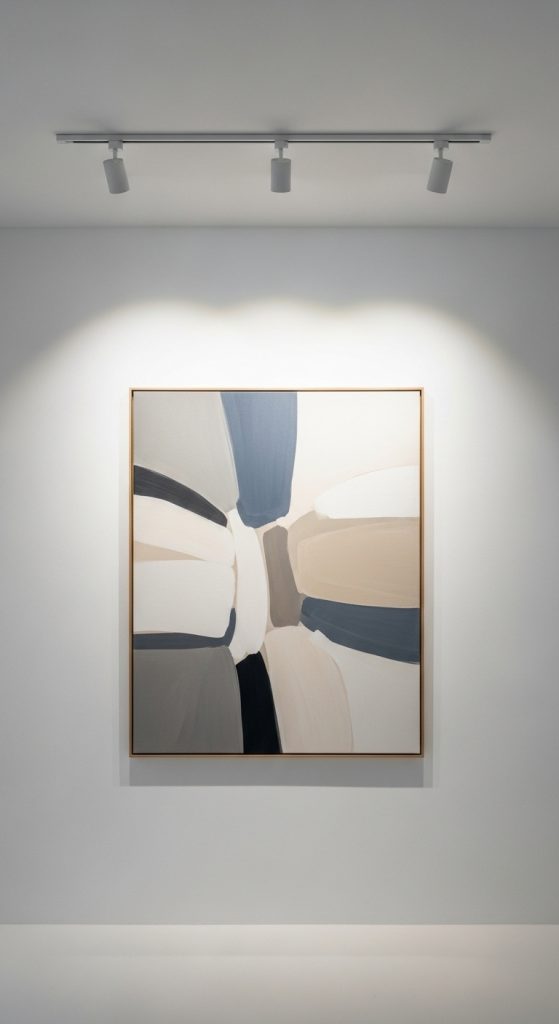
4. Accent Spotlights for Dramatic Effect
Accent spotlights are perfect for creating drama and emphasis. These small, focused beams can highlight a single piece of art, such as a sculpture, canvas, or decorative object. The contrast between the illuminated piece and the darker surroundings draws immediate attention.
Spotlights can be ceiling mounted, wall mounted, or even floor mounted, depending on the size and placement of the artwork. Adjustable spotlights allow for creative angles, which can add depth and texture to the piece. For example, angling a spotlight onto a textured canvas can accentuate brushstrokes and shadows.
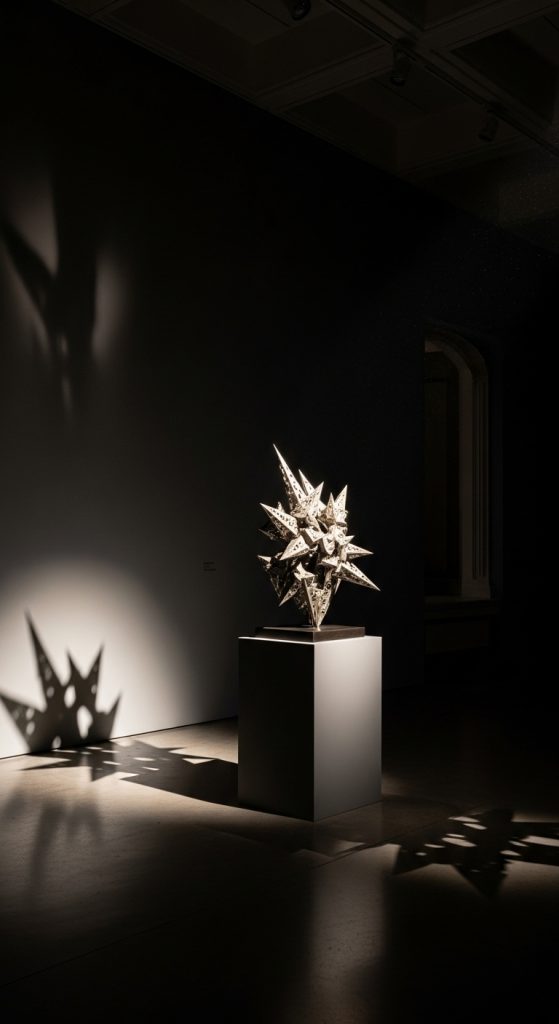
5. Wall Wash Lighting for Even Illumination
Wall wash lighting is an excellent choice for displaying multiple pieces on a gallery wall. By using wide beam fixtures or track lights set a short distance from the wall, light spreads evenly across the surface. This technique ensures that every piece receives consistent illumination without creating harsh shadows.
Wall washing is particularly effective for photography exhibitions, print collections, or when displaying a series of artworks together. It allows viewers to appreciate the works as a cohesive collection while maintaining clarity and vibrancy.
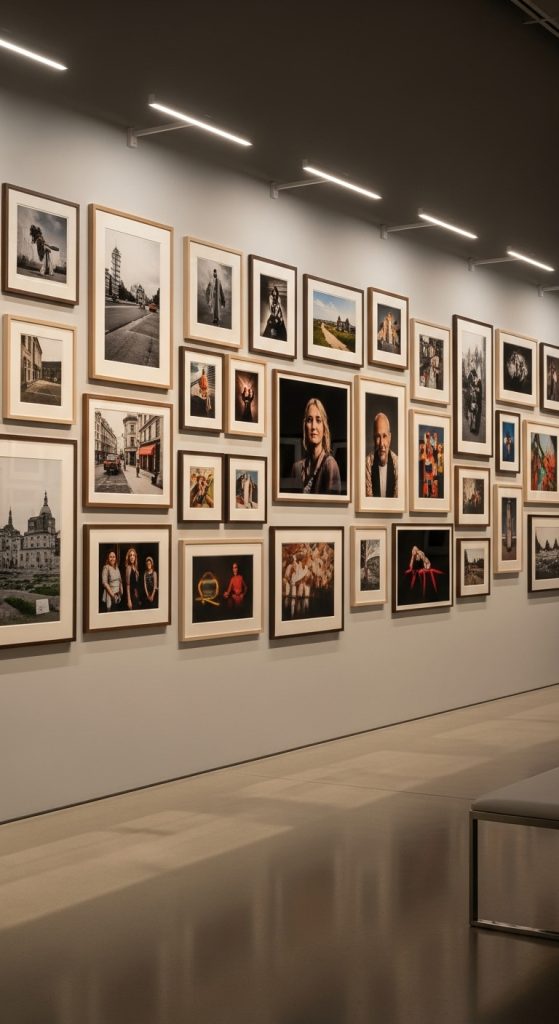
6. LED Strip Lighting for Contemporary Appeal
LED strip lighting offers a modern and creative way to illuminate art. Strips can be installed behind frames, under shelves, or along walls to create a glowing effect that highlights the piece. This method adds a contemporary edge and can be customized in terms of color temperature and brightness.
For example, installing LED strips behind a large canvas creates a halo effect, giving the artwork depth and presence. Similarly, strips under a floating shelf can light up sculptures or decorative objects placed on it. LED strips are energy efficient and versatile, making them an innovative choice for modern art displays.
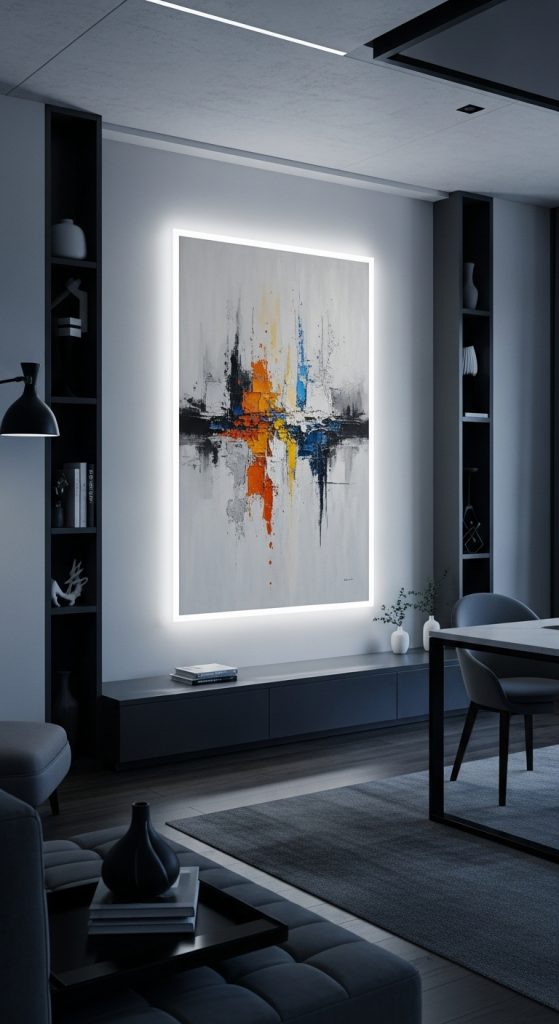
7. Natural Light with Careful Control
Natural light is often overlooked but can be one of the most beautiful ways to illuminate art. Sunlight enhances colors and brings out textures in a way artificial lighting cannot replicate. However, it must be carefully controlled to prevent fading or damage from UV rays.
Using sheer curtains, blinds, or UV protective window films allows you to filter natural light while still enjoying its benefits. Positioning artwork away from direct sunlight is also important. Natural light works especially well for showcasing earthy, textured, or large pieces that benefit from dynamic changes throughout the day.
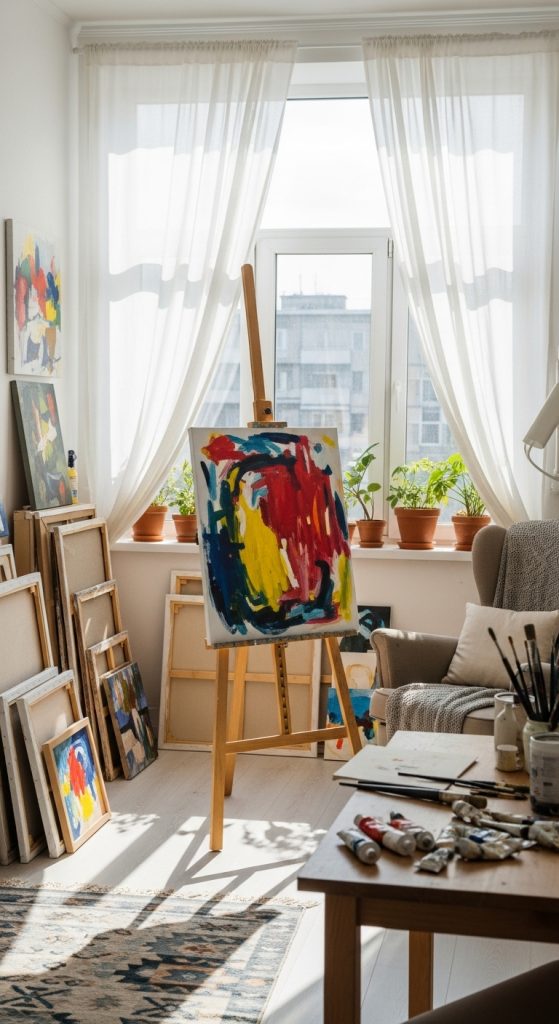
8. Ceiling Mounted Wash Lights for Galleries
For a more professional gallery approach, ceiling mounted wash lights can provide broad and consistent illumination. These fixtures are designed to bathe walls or large pieces in even light, ensuring every detail is visible.
Wash lights are commonly used in museums and art galleries where clarity and accuracy are essential. They eliminate shadows and highlight colors accurately, creating a professional display environment. In a home, they can be used for a large feature wall of artwork or a statement installation.
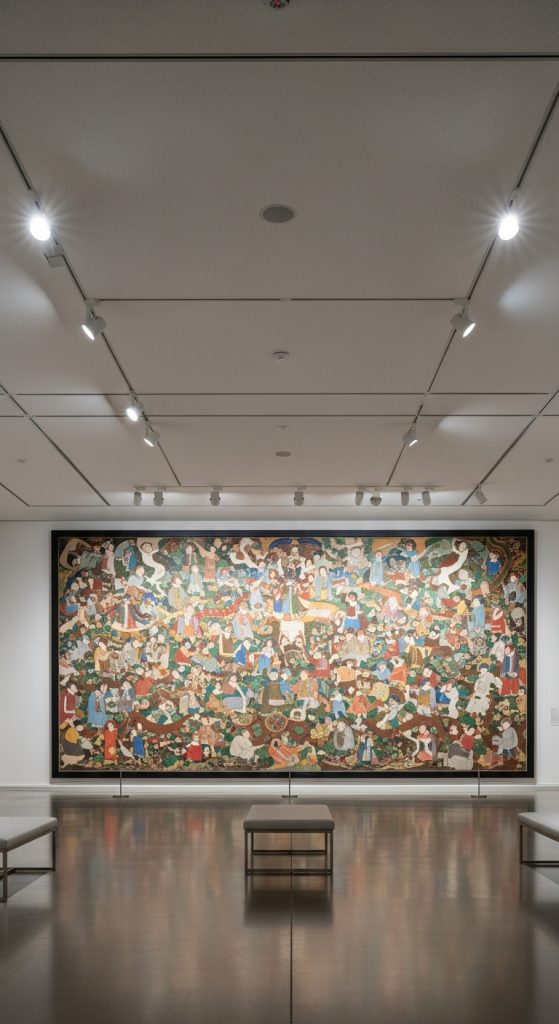
9. Sculptural Lighting Fixtures
Sometimes the lighting itself can become part of the artistic presentation. Sculptural lighting fixtures, such as chandeliers or custom-made lamps, can complement the artwork while also serving as functional lighting.
For example, a modern chandelier in a gallery room not only illuminates the space but also enhances the aesthetic. Pairing sculptural lighting with contemporary art creates a cohesive design that feels intentional and stylish. The interplay between the light fixture and the art adds another layer of visual interest.
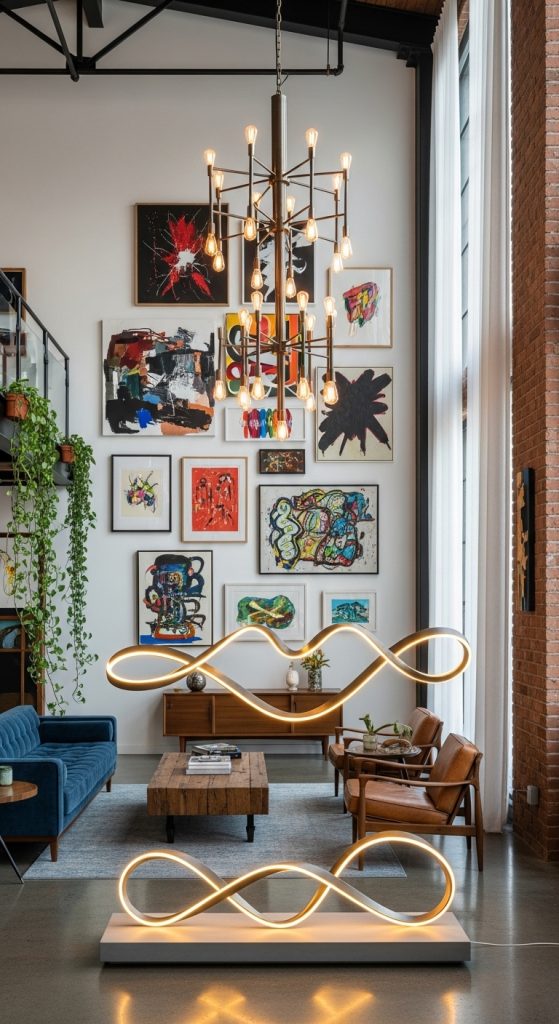
10. Layered Lighting for Depth and Versatility
Layered lighting involves combining different types of lighting to achieve depth and flexibility. A combination of track lights, spotlights, and ambient lighting allows you to highlight individual pieces while maintaining overall balance in the room.
For example, you might use recessed lights for general illumination, spotlights for focal art pieces, and LED strips for accent effects. This multi dimensional approach ensures that the artwork looks good at all times, regardless of the mood or time of day. Layered lighting also provides the flexibility to adjust settings for different occasions.
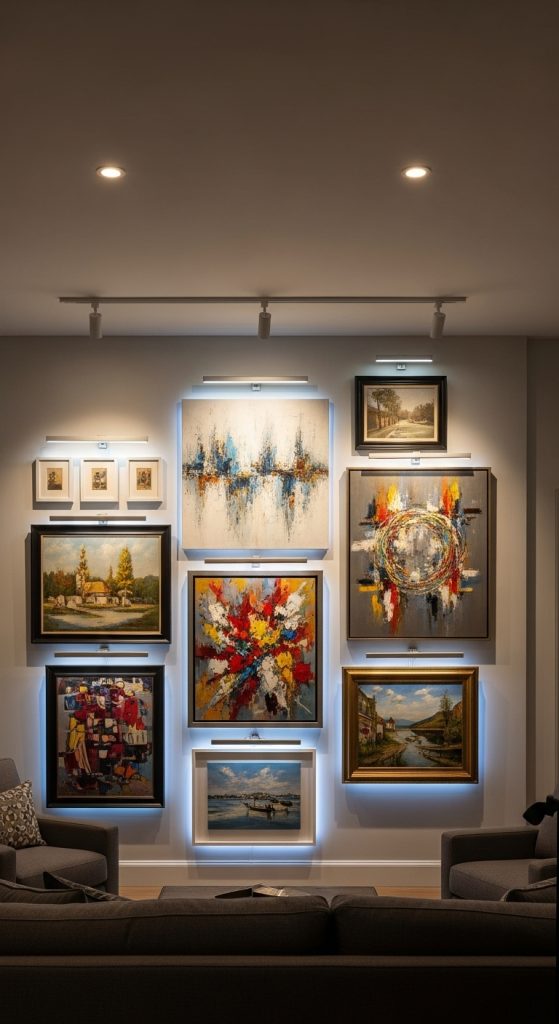
About Me

Chesung Subba
Author/Writer
Hello, I'm Chesung Subba, a passionate writer who loves sharing ideas, stories, and experiences to inspire, inform, and connect with readers through meaningful content.
Follow Me
Connect with me and be part of my social media community.
Leave a Reply